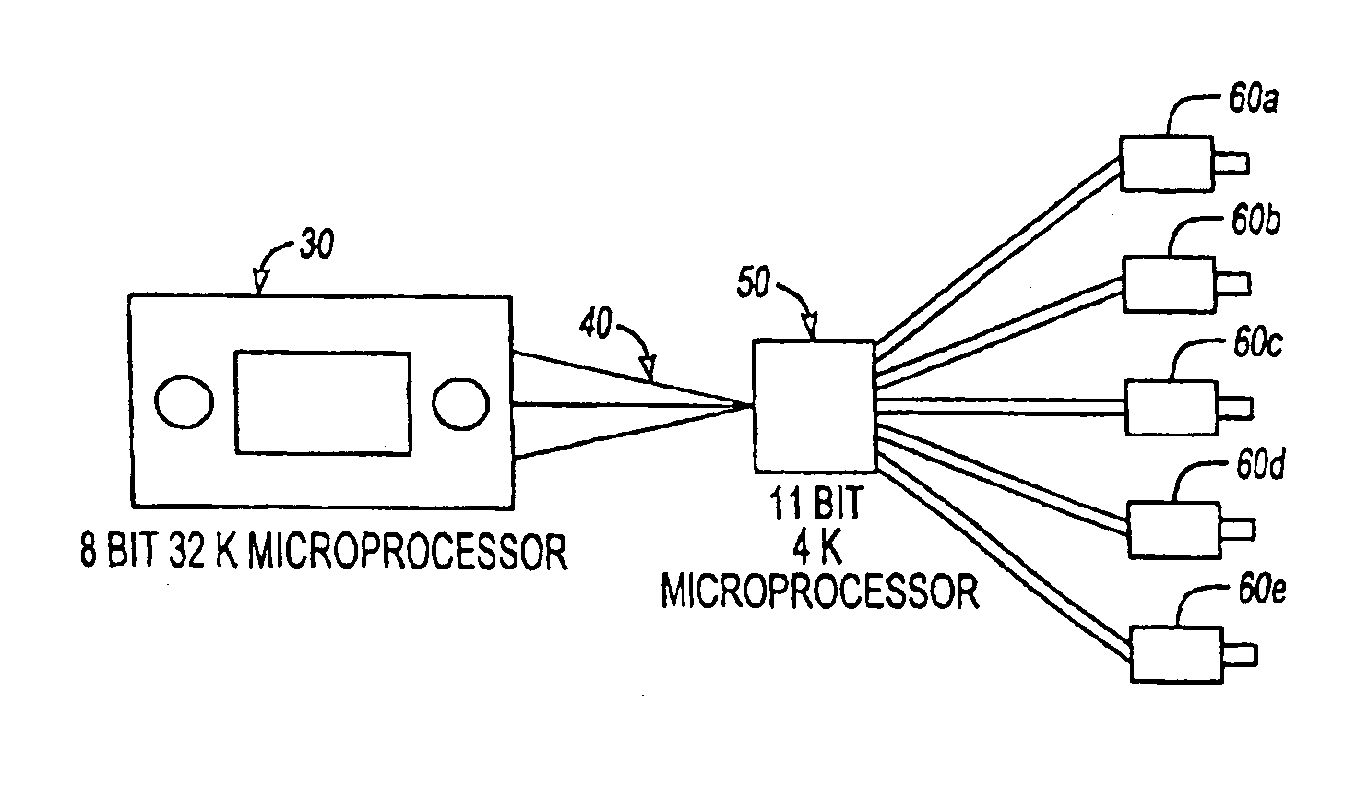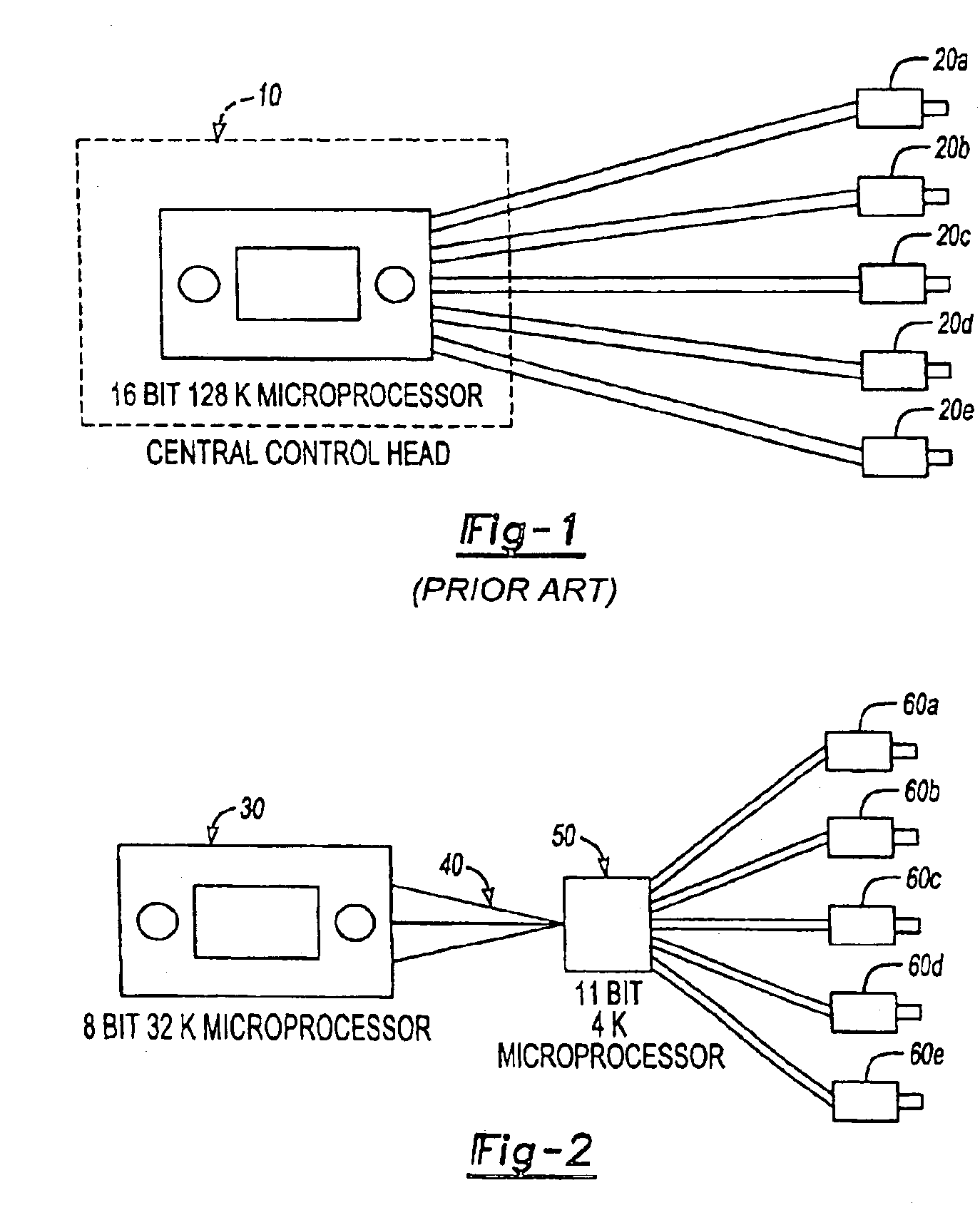Pulse count motor control device
a technology of motor control and pulse count, which is applied in the direction of vehicle seat, program control, vehicle registration/indication of working, etc., can solve the problems of high inefficiency and cost, difficulty, and requirement for a relatively expensive microprocessor in the control head
- Summary
- Abstract
- Description
- Claims
- Application Information
AI Technical Summary
Problems solved by technology
Method used
Image
Examples
Embodiment Construction
[0010]FIG. 2 illustrates one embodiment of a pulse count motor control system in accordance with the present invention. A central controller or processor 30, such as a control head of an automobile HVAC system, is connected to a pulse count control module 50 through a data bus 40. The control module 50 is then connected to one or more motors 60A-60E whose operation is to be controlled in accordance with pulse count monitoring.
[0011]The data bus 40 can be any type of data communication network or connection allowing bi-directional exchange of information between the central controller 30 and control module 50. For instance, in the automotive HVAC example, data bus 40 could be a serial peripheral interface (SPI) bus or a controller area network (CAN) bus that is frequently used in automobiles.
[0012]In the present example, motors 60A-60E are standard DC motors. However, any type of motor could be utilized in conjunction with the present invention as long as it is compatible with pulse ...
PUM
 Login to View More
Login to View More Abstract
Description
Claims
Application Information
 Login to View More
Login to View More - R&D
- Intellectual Property
- Life Sciences
- Materials
- Tech Scout
- Unparalleled Data Quality
- Higher Quality Content
- 60% Fewer Hallucinations
Browse by: Latest US Patents, China's latest patents, Technical Efficacy Thesaurus, Application Domain, Technology Topic, Popular Technical Reports.
© 2025 PatSnap. All rights reserved.Legal|Privacy policy|Modern Slavery Act Transparency Statement|Sitemap|About US| Contact US: help@patsnap.com


